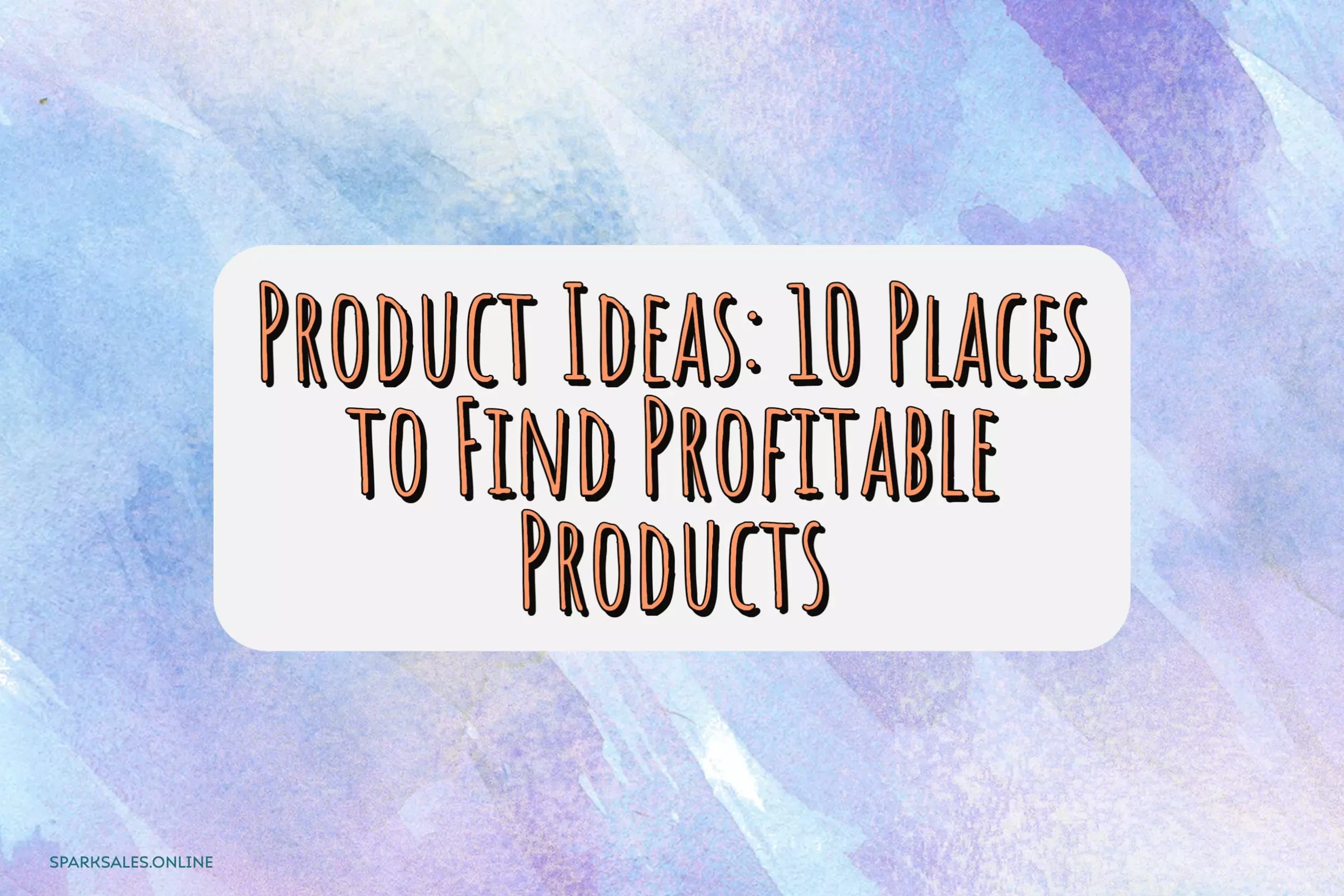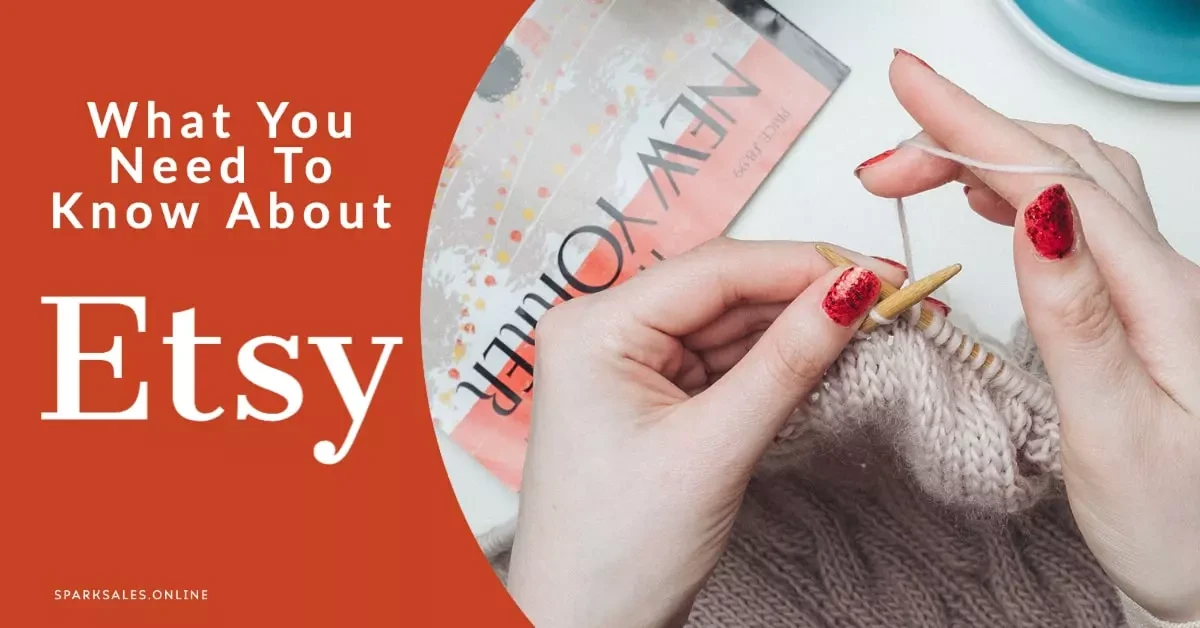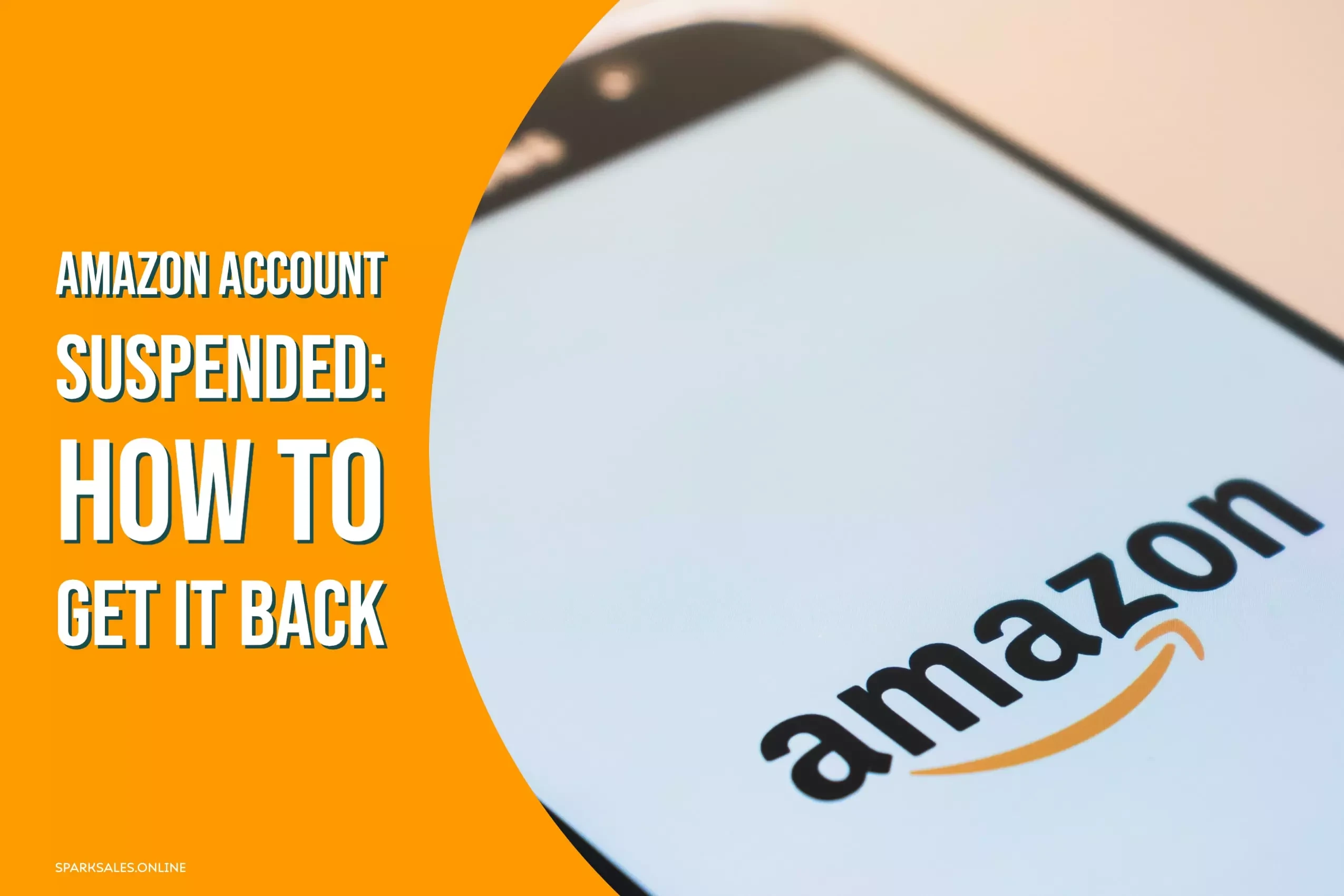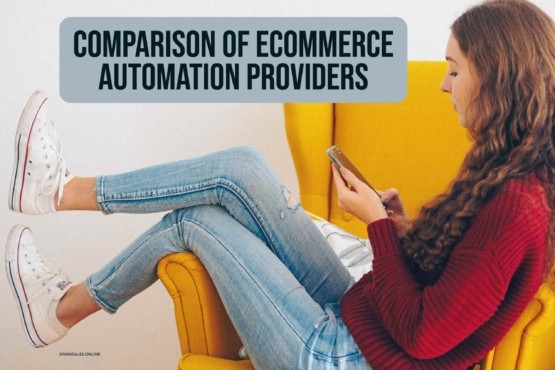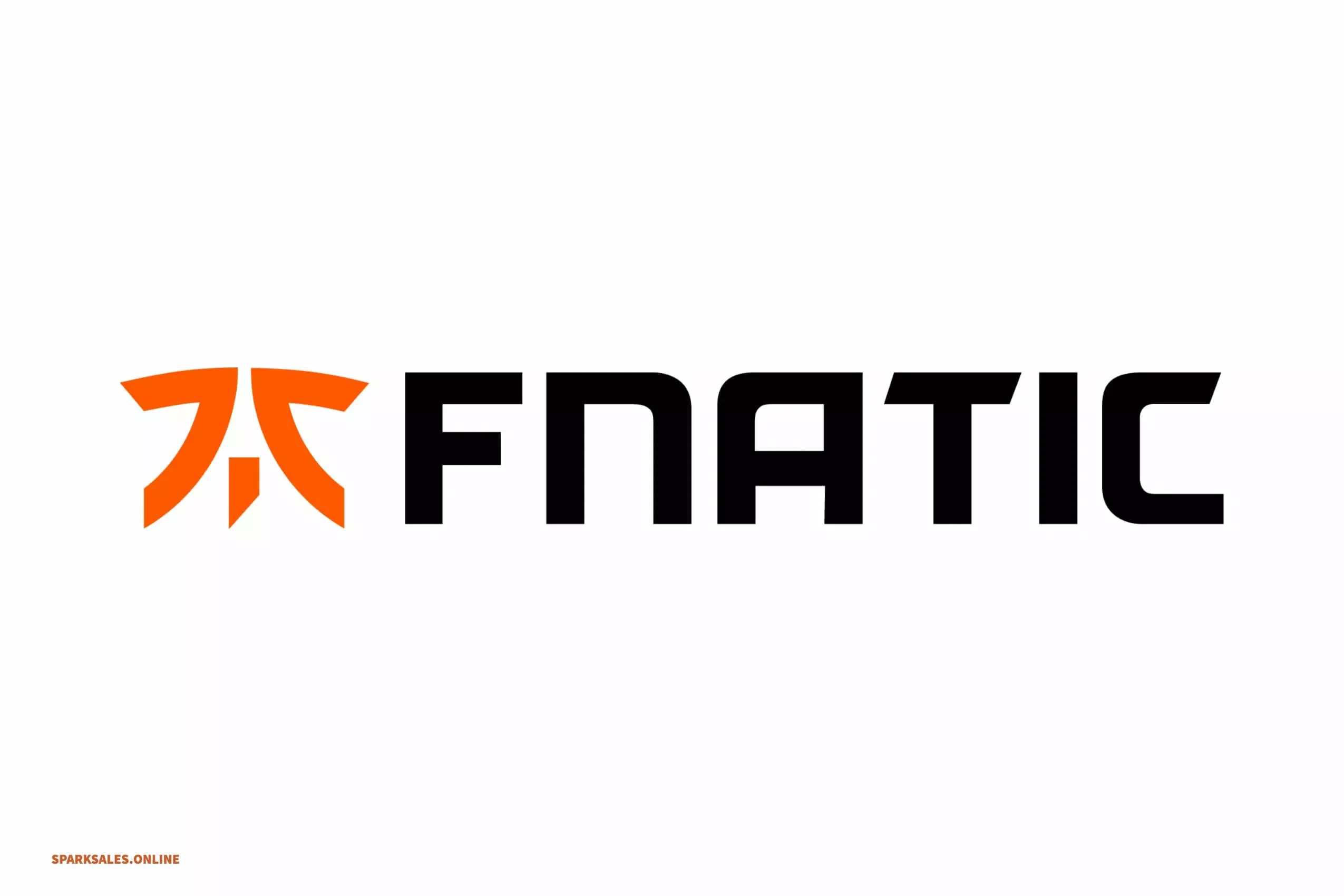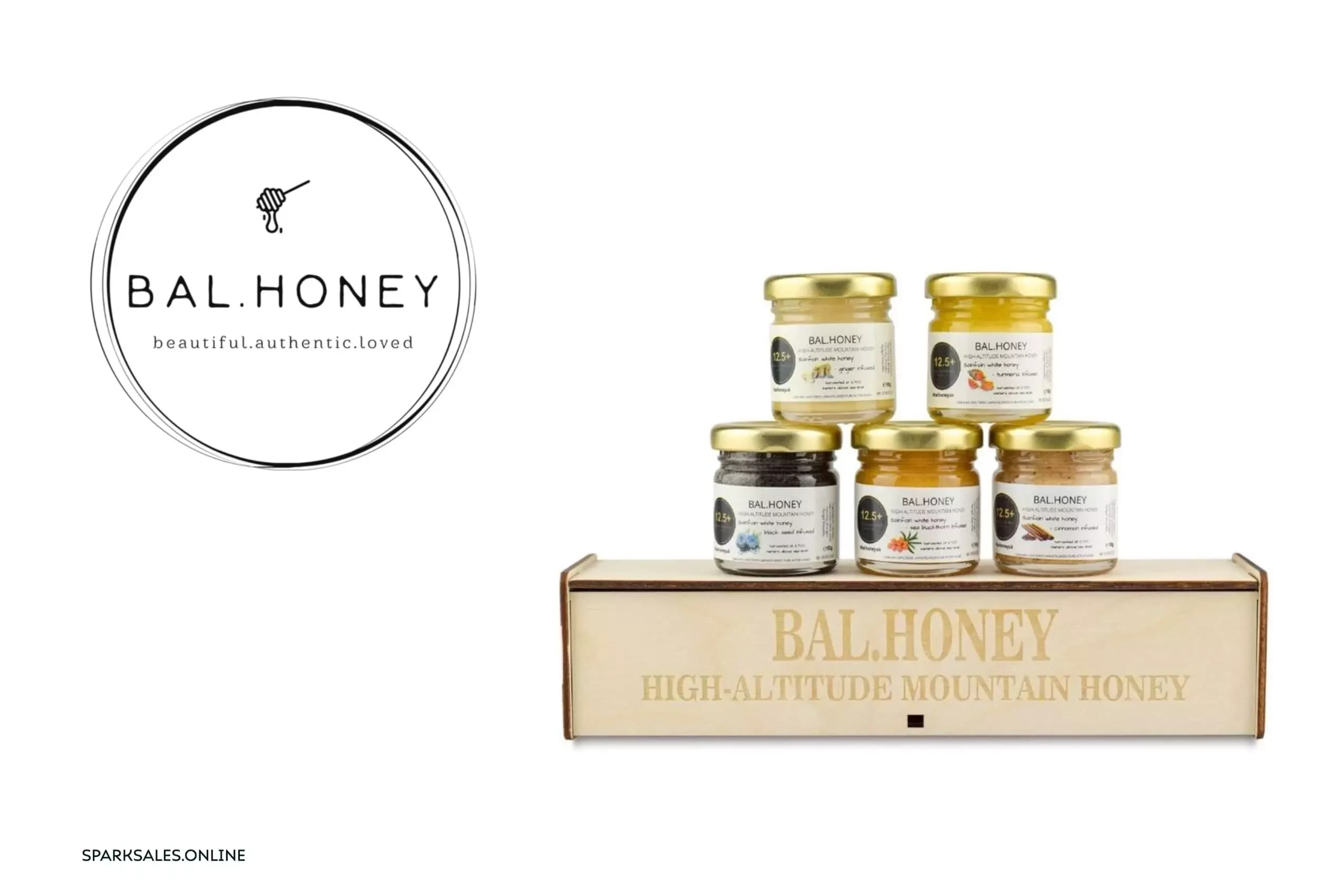Product research is an essential part of the entire process of selling online. The success of your business depends almost entirely on the products you pick to sell. If you choose an inferior product, no matter how well you improve it, market it, advertise or throw money at it, it isn’t going to sell well, and there simply won’t be any money in it to be made.
So in this article, I’m going to go over step by step everything that you need to know to set yourself up for success to find your first product. This will be an extensive and comprehensive article, so you may want to take some notes or bookmark this so that you can come back to it later.
Firstly, let’s talk about where you can find items to buy and resell online. Whether you’re a full-time ecommerce seller or you’re a side hustler who’s looking to make that extra bit of money, today’s article is definitely for you. Now I’m going to be running through 10 different places where you can get started to find items that you can resell online and make a profit.
![]()
Things That You Already Own
Let’s dive in. The first place that you can find items to resell online for a profit is a pretty obvious one; it’s things that you already own! Look around your house, especially if you’ve been living in the same apartment or house for a while; chances are you have a lot of stuff you are no longer using. Those items are just sitting there waiting for you to do something with them.
Friends & Family
The second place for you to find things to resell online is your friends and your family. So we all know that one family member who holds onto things and is a bit of a ‘collector’. There might actually be some things in that pile of ‘stuff’ that are worth something, and if they’re not doing anything with them, then it just makes sense for you to reach out to ask them if they’d like you to take some of those things off their hands. Maybe offer to share the profits with them? Just make sure that you receive a fair share; after all, you’re doing most of the work.
Charity Shops
The third place for you to find items to resell is charity shops. Now I know that this might not be that feasible for you right now in light of the pandemic and lockdowns. Still, it’s something to keep in mind when shops are open again, and you want to go hunting for valuable items to sell online.
Bear in mind that charity shops in more affluent areas are usually the best spots; you will be amazed at the type of items you can find in those places.
Selling Platforms
The fourth place that you can find items to sell for profit is on the platform you are looking to sell on, and I know that it sounds counter-intuitive, but it actually makes a lot of sense.
A lot of the people who sell on these platforms, whether we’re talking about Facebook Marketplace, Ebay or whatever platform you’re looking at, most of those people are not professional sellers. You see, most people are just looking to get rid of items they no longer need or want, so they tend to underprice the things they have.
So, of course, that is then an opportunity for you, if you have the time. If you’re ready to take on that little bit of effort to find severely underpriced things and then resell them on the same platform, it’s a win-win situation where you’re literally getting items in the door and sending them back out again!
Clearance Sections
Another great way to find items to sell is in the clearance section of big stores. So places like Walmart, Tesco or Target, you can also look on their website. For example, Argos has a sizeable online clearance section. You want to make sure that you are in the clearance section and looking at things that would definitely fetch a higher amount sometime in the year, perhaps not at that particular moment. Maybe that’s why the store is letting it go, and that’s an opportunity for you to get items that have been marked down and then resell them on another platform.
Now the only thing you have to bear in mind is that it might take a little while for some of those items to sell, especially if you’ve bought seasonal items. Perhaps you went into the clearance section, and you bought a tower fan. Yes, because it’s not summer, it’s going to be marked down, but if you wait just a little bit longer, you might be able to sell it for a lot more than you bought it for. So that’s the idea of looking for resale items in the clearance section. Some things will be, and some things won’t be in season now, but it is still a fantastic place to find products.
Liquidators
The next place for you to find products to sell online, especially if you’re selling from home, are liquidators. Now in the US, they’re called liquidators; in the UK, they have various names. Some will be called liquidators; some are called overstock, clearance stock houses or discount houses. You only need to know what it is you’re looking for. Essentially these liquidators get stock from the big chain supermarkets and stores and resell them at a discounted price.
In the US, a popular liquidator is Wholesale Ninjas. You can search in your area to find liquidators that deal with all sorts of items. Some liquidators sell furniture (Wholesale Ninjas sell a lot of furniture, bulky items from Target and end of line sales etc.). Do your research online, and you’ll be sure to find liquidators that you can buy items from.
Wholesalers
The next place for you to find items to sell online are wholesalers. Now I know that the thought of buying from wholesalers can be pretty daunting for many people, especially if you’ve never bought from them before. Still, wholesalers tend to have lower prices than you can find on the high street, of course, because they buy in bulk from the manufacturer.
So they are a perfect place for you to start to build your collection or your portfolio of items that you sell periodically, mainly because it’s tough for wholesalers to run out of stock on a particular item unless the manufacturer is no longer making such items.
The best place for you to find wholesalers to buy items from is by using Google and searching in your area. The first thing you’d do is type in what you are looking for, and you can put in the exact category of items; this immediately gives you results for so many wholesalers. Now some of them are not going to be entirely relevant for you, but some of them will be, and so all you need to do is start combing through to find the right wholesaler for you.
Manufacturers
The next place is to buy directly from manufacturers. I know that this can be quite a commitment for people who are just looking to make a small profit from home. Still, suppose you are the kind of person who has found what you like selling and would like to increase the inventory of products that you sell. In that case, it makes sense for you to start contacting manufacturers of those products, whether that’s in your locality or in another country, to see if you can buy from them directly.
You need to bear in mind that both wholesalers and manufacturers usually prefer to work with established businesses, so they will likely ask if you are a registered business. They usually want to see some kind of sales record; however, this is something that you can easily provide, and it really isn’t as intimidating as it sounds.
Online Consumer Trend Publications
Another place to look at is consumer product trend publications. This is a fantastic way to get an idea of the direction that consumer products are going in. They can also introduce you to new niches and industries that you previously didn’t know about.
Online Consumer Marketplaces
Online consumer marketplaces like Ebay, Etsy, AliExpress and Amazon are great places to see what’s popular and selling right now. AliExpress is Alibaba’s consumer wholesale marketplace that allows buyers to order in smaller quantities. If you want to dive deeper into what’s trending right now, take a look at AliExpress Popular, which features the most frequently purchased products.
Product Research
So the next step is product research; you need to know before you invest in a product, whether there is indeed a market for it. If you think you’ve found an untapped niche, you also need to be sure that that niche isn’t already saturated, and that’s what we’re going to learn how to do next.
The Four Steps of Product Research
So product research consists of three core components:
- Product Discovery
- Product Analysis
- Product Tracking
At least that’s what you’ll typically learn on your own. However, there’s actually a fourth and crucial component that people don’t tend to talk about very often. It is a vital part of the success of your product research and will make the process a lot quicker and easier for you. That fourth component is planning. Now you wouldn’t go on holiday without a plan, so I don’t understand how anyone can start a business without one.
![]()
Planning
Every successful business starts with a business plan. A business plan gives you direction and clearly defines your goals and what you need to do in order to achieve those goals. So when it comes to product research, you need to define your objectives and what you need to do to achieve those objectives.
So in the case of doing product research, the goal is how much profit you realistically want to make each month. You need to define what’s necessary to achieve that goal. For example, if your goal is to make £3000 profit per month, it boils down to answering one question: How many items do you need to sell every month?
To figure that out, you need to know how much the profit margin is for each item you sell. If you know that, then simply by dividing that number by �£3000, you’ll learn how many items you need to sell. So since we don’t know what we’re going to sell yet, we need to make an assumption. It’s wise to aim for a minimum profit margin of £5 but ideally £10. The key here is that the profit margin needs to be high enough so that:
a) It’s worth your time even to pursue selling this item in the first place. Why do all this work to make pennies on each sale?
b) To absorb any additional costs like advertising or fluctuations in the market. If your profit margin is only £1, then how can you afford to advertise? Plus, if your fees or shipping costs increase, you’ll suddenly be in the red.
Many people prefer to use percentages when they talk about profit margin, and they’ll tell you that you should aim for something like 30% to 50% profit margin. You do need to be careful with percentages regarding profit because percentages are, of course, relative. If you have a 50% profit margin on a £1 product, that may sound great, but in reality, you’re only making 50p. So to make £3000 per month, you’d have to sell 6000 units, that’s 200 units a day!
What’s more realistic is selling 5 or 10 units a day. This way, if you have a £10 profit margin, then selling ten items a day will hit your £3000 profit per month. Make sense? Once you’ve figured out all of these numbers to suit your own goals, they’ll come in handy again later, and you’ll see why it’s essential to have this all planned out first.
![]()
Product Discovery
The next step is product discovery. This is where you need to analyse your product ideas to see if they meet all of the criteria for being a viable product to sell, such as having high demand with low competition and meeting your profit goals. How do you actually discover products, though? Just sitting around all day trying to come up with different product ideas to analyse isn’t going to get you very far; how many ideas can you realistically come up with on your own?
Back in the day, you really did have to scour the internet to find product ideas independently. Nowadays, there are powerful tools available that make product discovery and analysis much faster and easier.
One of the most popular product research tools is by Jungle Scout. There are many of these tools out there, and they’re all pretty similar, so choose whichever one makes the most sense to you and your budget.
The two primary tools on Jungle Scout you’ll be using are the product database: which we’ll use for product discovery, and the chrome extension to do product analysis. A product database is a powerful tool because it allows you to find items in Amazon’s marketplace that match the specified search criteria. The chrome extension allows you to quickly and easily analyse niches by providing all of the data in a convenient window for you to explore. We’ll go over this in the product analysis step.
Jungle Scout has a free 14-day trial, so you could technically do all of this for free. If you decide to take a membership, they have a few options to choose from. If you have a tight budget, you could also cancel your subscription once you’re done and re-join when you’re looking for your next product to research.
How To Use a Product Database
So a product database is a great place to start looking for viable products. Especially for beginners because the most challenging part of doing product research is usually the product discovery phase. It’s impossible for anyone to sit around and dream up enough product ideas to research. With a product database, you can find thousands of different product opportunities simply by changing various search parameters.
![]()
So if you’re planning to sell in the US marketplace, choose the US, then pick the categories you want to find products to sell in. You can select all of them; however, it’s best to choose specific categories and avoid types like:
- Clothing, Shoes & Textiles – This is because there are way too many variations, and people can change their minds after buying and return them. So it’s not something you want to deal with, especially if you’re just getting started.
- Electronics – They can break and be hard to use, so you’ll have to do much more customer service with these items.
- Anything that you can eat or put on your body – Like lotions, creams and even temporary tattoos, because you really don’t want to be liable if someone was to get injured or hurt.
- Toys & Games – This category often has restrictions, and it’s super competitive. The life cycle of these products is usually very short too.
![]()
Stick with standard-sized products; this keeps your shipping and Amazon fees low. Oversize can be a logistical nightmare with high storage, shipping and fees, to the point where it may not even be cost-effective to do FBA.
Go ahead and leave all the seller types: Amazon, FBA & FBM checked.
Filters Explained
Now, this is where you can fine-tune the filters to find specific micro-niches of products. The key here is understanding what each of these filters does to be able to use them effectively and not use the same filters that everyone else is using. That way, you can find products that other people aren’t!
![]()
- The first filter is the Price. This is where you can set the minimum and maximum price of the products sold in the Amazon marketplace.
- Next is the Net Profit filter. This is how much profit there is minus the FBA fees, so you can search for products that have a specific profit margin. They should probably call this the Gross Profit filter because Jungle Scout doesn’t know your product costs.
- The BSR or Best Seller Rank filter shows a score based on how well it’s selling compared to other listings in the same category. The lower the score, the better.
- The Sales filter is how many units are sold every month, and as you might have already guessed, your planning will come in handy whilst using this filter.
- Revenue is how much total money is made in sales without subtracting anything, such as fees or costs.
- The Reviews filter shows how many people have left a review for the product; this is how you can determine how competitive a product or niche is.
- Rating is the feedback score the listing has or how many stars it has, so that’s a number from 0 to 5 stars.
- Weight should be pretty obvious; that’s how much the item weighs.
- The Sellers’ filter shows how many listings are selling the exact same product.
- LQS is the Listing Quality Score; this is a score that Jungle Scout has given to each listing based on its optimisation. The score is out of 100; poor quality listings have lower scores.
- The Date First Available filter is when the listing started being sold on the Amazon marketplace. We can use this filter to tell how competitive or saturated a niche is becoming, and we’ll go into that later in the article.
- You can include or exclude specific keywords, and it’s wise to exclude top brands and unavailable products.
Suggested Filters
Okay, so now that you know what each one of these filters does. Start with a range between £15 and £50 for the Price filter. The reason for this is that for anything less than £15, once you subtract your costs and fees, there won’t be much money left for profit. You could use the rule of thirds here; typically, one-third of the sale price will go to inventory, one-third to fees, the last third will be your profit. So at £15, you can expect a third of that will be your profit at £5.
It’s best not to go higher than £50 because buyers will typically put more thought and research into products beyond that price point since it’s no longer an impulse buy. Now in the current climate, you could set the price range between £30 and £50. This will help you avoid competition because most beginners or people with smaller budgets are looking in the lower price range. Higher-priced products also generally have higher profit margins. With the current storage unit limitations for new products, you don’t need much more starting capital to get into the higher-priced products.
Now set the maximum Reviews between 75 to 125. Reviews are how you can determine how competitive a niche is. You want to find niches with low competition; these will be niches where most products have few reviews. Niches, where most products have lots of reviews, will be much more difficult and expensive to gain traction and break into.
Set the minimum monthly Sales to 300. That’s a good starting point if you’re looking for products with a £10 profit margin, based on your planning, target sales and profit goals that we went over earlier.
Set the maximum Weight to 2lbs so that the product isn’t considered oversized; otherwise, the fees will be much higher.
Use the Excluded Keywords field to filter out products that you don’t want to sell, like clothing, major brands, food and supplements.
Now keep in mind that none of these search criteria are set in stone. These are just recommendations for a starting point. You can play around with them to find a variety of products; for example, you can set a maximum Review rating of 3.5 to specifically look for products that are selling well even though they have poor reviews. You could also set the LQS to a maximum of 75 and look for products with poor listings. You could also combine them to see listings with a minimum of 4 stars and a maximum of 75 LQS. So that way, you’re finding products that have great reviews but also have poor listings. There’s no right or wrong way of doing product discovery, so play around with the filters and see what you can discover.
Tip: Try not using whole numbers in the price and revenue fields. Most people will put £30 or £50, try something like £29.79 or £50.87, for example. This way, you can find those outliers that are right at the border of those price points. Remember, you always have to think outside of the box.
![]()
When you click Search, Jungle Scout will pull up all of the products that match your search criteria. It may retrieve many matching listings, and if that’s overwhelming, you can always tighten up the search filters to reduce them. Somewhere around 2000 to 6000 results are pretty manageable; anything more than that can be too much to do all at once, so split it up if you have to.
Tip: Change the number of displayed results from 25 to 100. That way, you do not have to navigate through so many pages. It’s also wise to work backwards through the results because everyone else will be starting on page one. This is just another opportunity to think creatively to hopefully find products that other people aren’t discovering.
Now you should browse through these listings, looking for ones that catch your eye. Products that you don’t immediately recognise or are strange and out of the ordinary are the best ones to look for. Products you are familiar with are almost always too competitive, so don’t waste your time looking at them.
![]()
So when you find a product that catches your eye, like this vinyl record holder, it’s time to figure out what you believe the main keyword is and do a search on Amazon for this product. In this case, based on the title, I think the main keyword is vinyl record holder. Suppose you’re not sure, or you want to verify what the keyword is. In that case, you can use the Keyword Scout tool.
Type in what you think the main keyword is and see if that has the highest search volume; you can also try different keyword phrases and compare or grab the top competitors’ ASIN. Plus, you could do a reverse ASIN search; this will tell you the main keywords that the listing is ranking for and help you see the primary keyword phrase.
![]()
Now you’ll notice that vinyl record holder only has 5600 searches, whereas vinyl record storage has 28000. Once you know what the keyword phrase is, head over to Amazon, make sure to choose ‘All Departments’ and do a search for vinyl record holder. Double-check that you’ve chosen the right keyword by making sure that the majority of the listings retrieved are indeed the same product you’re looking at; otherwise, you’re searching using the wrong keyword.
Tip: Be careful; if you use a keyword phrase that is too long-tail (meaning it’s too specific), you’ll still see similar products in the search, but you’re actually looking at a smaller subset of all the listings you’d be competing against. This is a crucial step that you want to get right; otherwise, you’re analysing the wrong data.
Jungle Scout Chrome Extension
![]()
In this case, it looks right, so we can pull up the Jungle Scout chrome extension. First, you can see that the chrome extension has retrieved all of the details for the top listings in the search results. It’s vital at this point that you do not sort these listings and rearrange them; you want to analyse the niches with the listings in their organic order. This is because the top listings are the listings you’ll be competing against, so don’t sort the listings by sales, revenue or reviews.
You also want to ignore the sponsored listings; these are the listings placed based on the PPC advertising system. You can tell if a listing is sponsored if it has an SP logo next to it; you can turn these off in the settings by clicking on the menu and turning off sponsored products.
By analysing the data such as the price, sales volume, revenue and reviews, you can determine if this niche meets the criteria you set out in your plan and if you’re able to hit your profit and sales goals.
![]()
Analysing Your Competition
So the first thing to look at is if the niche is too competitive. Scan down the top 12 listings and see if the majority of the listings have less than 125 reviews; that means out of the top 12 listings, you want to see that at least eight to ten of them have less than 125.
Be sure to count them; don’t rely on the summary averages at the top because these averages don’t tell you the whole story. A few listings with a lot or very few reviews will throw off the entire average. For example, if eight out of the ten listings have 150 reviews, the average is 120, which is less than 125, but the majority actually have more than 125.
You also want to only use the Opportunity Score as a reference; never base any decisions on it. Now, remember for it to be a viable product idea; it needs to pass all of the criteria. So if it fails at any point, just skip this product, move on to the next one and don’t spend any more time on it.
Now, if it does pass for low competition, check if it meets your sales and profit goals. Do most of the listings have 300 or more sales per month? Again count them. Don’t use the average at the top. If it passes, then is the revenue high enough so that you can make £3000 profit per month? Again apply the one-third rule here. If your target is £3000 profit per month, the revenue needs to be around £7000-£7500, or higher. You also want to look at the price; you want to make sure that most of the listings have a price point of at least £15. Remember, if the price is less than £15, there’s not much money to be made.
![]()
FBA Calculator
If all the tests passed, you could dive a bit deeper by checking the actual profit margin if you were to use FBA. One way to do this is by using the FBA calculator. Grab the ASIN of one of the competitors (you can find the ASIN in the URL; it always starts with B0), copy and paste it into the FBA calculator. You’ll see that it pulls up all of the product details regarding the size and weight. To calculate the proper fees enter the sale price, how much it costs to manufacture and ship to Amazon, and it will tell you how much profit you’re making.
Estimating Product Cost
An excellent way to get a rough estimate of the product price is to go to Alibaba, search for the main keyword and then look for similar products to get a rough estimate.
Saturated Niches
An essential metric that people often don’t consider is the Available From value; this is how long the listing has been available on Amazon. You want to avoid niches where there are many new listings; this is how you can tell if a niche is saturated. If you see many new listings, then that means a lot of people have recently discovered this niche and launched their products, and there’s probably even more to come.
Also, keep in mind that you can’t trust the data you see from new listings; they’re most likely doing deep discounts, vouchers and promotions to generate sales. Therefore the sales and revenue numbers you see don’t mean anything since they’re not organic sales, so out of the top 12 listings, make sure that you don’t see more than four or five new listings.
Consider listings as ‘new’ if they are less than three months old. You also want to make sure that the niche isn’t brand dominated, meaning that there are no brands with more than three or four listings in the top 10 and that there aren’t any major brands.
This is because top brands are well established and have brand-loyal customers who will buy directly from them. They may also be generating sales from direct traffic outside of Amazon, so you won’t be able to compete with them. Not to mention that they often have unlimited advertising budgets too.
You also want to make sure the niche isn’t seasonal, meaning it only sells well during a short period during the year, like swimwear or Halloween costumes. You want products that sell well all year round.
You can check for seasonality by searching on Google Trends, searching for the main keywords, and changing the period to five years. Ensure that the graph is relatively flat all year round; some niches may have spikes during Christmas if they’re giftable items, so that’s okay, just as long as it’s not seasonal like a Christmas tree decoration.
Product Tracking
![]()
If you find a product that meets all of the product research criteria, it’s time to start product tracking to verify the sales velocity. This is an essential step because the sales velocity you see in the chrome extension is just an estimate. It’s best to make sure that the daily sales you’re seeing are consistent day after day.
When you see a listing that has a thousand sales in a month, you don’t know if they sold 33 units every day or they sold a thousand units on the first day and then nothing for the rest of the month. This is where product tracking will help you verify that data. You can do this by adding products to a product tracker (there are a tonne out there), and the product tracker will give you the sales history that you can then analyse. If you use the Jungle Scout product tracker and it’s a product that they’ve already been tracking, you’ll see the sales history right away.
However, if it hasn’t, it’ll start tracking it. You can check back later to see updates. You want to follow the top 15 to 20 listings for at least seven days, so you can get a good idea of what the daily sales velocity is.
Methods To Differentiate
One critical aspect to keep in mind whilst you’re doing product analysis is how you’re going to differentiate. You can’t sell the same thing as the other sellers and expect to do well. You need to have some sort of competitive advantage; otherwise, you can only compete based on price. You never want to do that because competing based solely on price will always end up being a race to the bottom. Everyone keeps lowering the price until, eventually, no one is making any money. Always differentiate and offer a high-quality premium product, so you have a competitive advantage, and more importantly, you can charge more.
Now, how do you differentiate? Well, there are several ways; one particular method is to look in the reviews of other sellers listings and see what people are complaining about to see if you can identify a common problem that you can address. Such as fixing a problem, adding a feature or improving it somehow.
The easiest way to differentiate is by bundling. This is when you add a small bonus item to the product to add value for the buyer; it also doesn’t cost you very much. You can get bundling ideas by looking at the frequently bought together section in the listings or just using common sense.
Tip: Make sure you’re not bundling two main items together; the bundled item should be a small bonus that the buyer is essentially getting for free, but at the same time, it should make sense to pair them together. For example, if I’m selling wrapping paper, I could bundle it with a small roll of tape. However, bundling wrapping paper with Christmas tree decorations wouldn’t be logical.
Another way to differentiate is to have a better listing. Sometimes you run across a viable niche where all of the listings are extremely poor or have poor reviews. However, despite having a poor listing and questionable reviews, sales are still really good. In those cases, you can dominate the niche by merely having a better listing with better professional photos and copy but obviously, bear in mind that you should always have a top-notch quality listing anyway.
Potential Problems & Mistakes
Now here are a few tips on potential problem areas:
- Don’t differentiate based on something subjective. Now, what do I mean by that? Well, subjective things are things like colour or artistic design. Products like paintings, artwork, decorative products and coffee mugs with phrases are all personal preferences. If someone doesn’t like the colour you chose, the type of artwork or the expression you put on that mug, they’re not going to buy your product, regardless of the price or quality of your product or listing.
- Differentiate based on something objective, where it appeals to everyone, like the quality, material, features, benefits, or bonus items.
- Ensure that the product is small and lightweight; ideally, you want products to fit inside a shoebox and weigh less than a pound. Otherwise, your shipping costs and Amazon fees will be much higher.
- Another thing is to make sure that the product is easy to manufacture. The more complicated it is, like if it has many pieces and moving parts or requires assembly, it’s more likely that they’ll be quality control issues.
- Along the same vein, it’s also wise to stay away from products that are difficult to operate, require complicated instructions or can break easily.
- Anything that can be a liability where someone could get hurt. Like food, lotions, creams or anything that would go in or on your body.
- Also, products that people often return like clothing and toys. It’s just not worth the risk of bad reviews.
Restricted Products
Finally, I’ve left one of the most critical product research mistakes to cover last. Far too many people don’t make sure ahead of time that they’re allowed to sell their product on Amazon.
Amazon has a list of restricted products that you can’t sell without prior approval, such as:
- Artwork
- Lighting
- Plants
- Cosmetics
- Electronics
- Medical Devices
Just to name a few. You can see an entire list here. They also have a list of prohibited products; these are products that you can’t sell on Amazon, full stop, with or without approval.
Because certain categories require approval for you to sell in them, like some household categories, automotive and toys and games, you don’t want to invest in a product only to find out later that you can’t sell it on Amazon. So you always want to check ahead of time to verify if there are any restrictions, then you can decide if you’re going to pursue the product or not.
One way to check if a product has any restrictions is to get the ASIN of a competitor’s listing, contact seller support and ask them if there are any restrictions. You could also create a test product listing for that product; simply create a dummy listing and enter all of the details for that product and see if any errors come up indicating that there are any restrictions.
Keep in mind, though, that this method certainly isn’t a guarantee. If no errors pop up, that doesn’t mean you’re okay going ahead and selling it. Sometimes the system doesn’t flag the listing right away; you could end up selling the item for a few days or weeks, and then suddenly, your listing will get flagged for selling a restricted or prohibited product. So make sure you do your due diligence so you don’t invest in a product that you can’t sell.
Patented and Trademarked Products
Another common issue is sellers selling a product that is patented or trademarked. This is a serious issue, and many people do not take it seriously. Violating someone’s intellectual property is a very serious offence, and you can get sued. You can check on Google Patents by searching for the main keywords for that item and then looking to see if anything pops up for that product.
Remember that just because you didn’t find anything doesn’t mean that there isn’t a patent or trademark on it. It could just be that the owner filed it under a different name or keyword than the one you were searching for. If you’re not sure, hire an intellectual property lawyer to search for you.
You also sometimes see people complaining that they see other sellers selling the product, so why can’t they? It doesn’t matter if other people are selling it; they may have purchased the product legally or got permission from the intellectual property owner to sell it. If you can’t prove that you did the same, your products will be considered counterfeit. So do your due diligence and stay away from patented and trademarked products. With that in mind, you also want to avoid products even if the patent is pending.
This also holds true with trademarks; you can’t sell t-shirts or coffee mugs with Mickey Mouse or Batman logos on them. Those are trademarks; you need permission from the intellectual property owner (in this case, Disney or DC comics) to resell or manufacture products with their brands on them. Again just because you see other people selling them doesn’t mean that you can; they may be selling it legally, or they might just have not been caught yet.
So that’s everything; that’s how you do effective product research whilst limiting mistakes and potential pitfalls. There are a variety of resources out there for your personal use. It can be a daunting process but hopefully, the tools and information covered here make it seem less intimidating to research product ideas and potentially profitable products. If you need support with your online business and are looking to grow your sales further or even get set up, contact us today. One of our team will reach out to set up a call and discuss what support you need.
